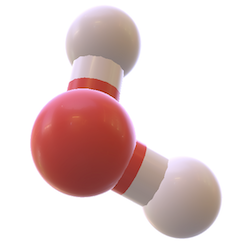Reaction: PI3 binds the bacterial surface
- in pathway: Antimicrobial peptides
Peptidase inhibitor 3 (PI3) is a low-molecular-weight protein produced by epithelial and immune cells (Pfundt R et al. 1996; Molhuizen HO et al. 1993; Sallenave et al. 1994). It is secreted as a 9.9 kDa precursor protein PI3(23-117) (known as trappin-2 or pre-elafin) that contains an N-terminal 38 amino acids domain (named cementoin) and a C-terminal 57-residue domain with the whey acidic protein (WAP) structure (Nara K et al. 1994). Mature PI3 (elafin) is a 6 kDa generated via proteolytic processing of PI3(23-117), primarily by the mast cell-derived protease tryptase (Guyot N et al. 2005). Both 6kDa and 9.9 kDa proteins of PI3 possess an antimicrobial function (Baranger K et al. 2008). The antimicrobial activity of PI3 is thought to depend on its cationic nature which allows PI3 to interact with and disrupt the membranes of target organisms (Baranger K et al. 2008). In vitro, PI3 protected human cells against two major respiratory pathogens, the Gram-negative Pseudomonas aeruginosa and Gram-positive Staphylococcus aureus (Simpson AJ et al. 1999; 2001). In vivo, PI3 also protected murine lungs against the injurious effects of both bacterial pathogens (Simpson AJ et al. 2001; McMichael JW et al. 2005). In addition to the above-mentioned pathogens PI3 showed bactericidal activity in vitro against Klebsiella pneumoniae, Haemophilus influenzae, Streptococcus pneumoniae, Mycobacterium tuberculosis and Branhamella catarrhalis (Meyer-Hoffert U et al. 2003; Baranger K et al. 2008; Gomez SA et al. 2009). Furthermore PI3 possesses potent fungicidal activity against Aspergillus fumigatus and Candida albicans, which have preferential tropism for human lung tissue and other mucosae (Baranger K et al. 2008). PI3 has also been shown to possess antiviral activity against human immunodeficiency virus (HIV) and herpes simplex virus 2 (HSV2) (McNeely TB et al. 1995, 1997; Iqbal SM et al. 2009; Ghosh M et al. 2010; Drannik AG et al. 2013). The mechanism of antiviral activity remains to be clarified. Besides microbicidal activity, PI3 proteins can function as inhibitors of peptidase activity of human neutrophil elastase and proteinase 3 through the WAP domain. The antipeptidase activity of PI3 is thought to control excessive inflammation and tissue damage (Nara K et al 1994; Moreau T et al. 2008). The antipeptidase activity of the precursor protein of PI3(23-117)(trappin-2) was also found to prevent proliferation of P. aeruginosa by inhibiting bacterial serine peptidase (Bellemare A et al. 2008; 2010). However, another study showed that PI3 exerted its antibacterial effects through mechanisms independent from its intrinsic antiprotease capacity and suggested that the cationic nature of PI3 peptides is responsible for its bactericidal activity (Baranger K et al. 2008).
PI3 is constitutively expressed in a number of epithelial barriers that are constantly exposed to foreign antigens and pathogens, including skin, airway, and intestinal mucosa (Pfundt R et al. 1996). PI3 can be transcriptionally upregulated at various sites of inflammation by LPS or pro-inflammatory cytokines such as IL1B and TNF (Sallenave JM et al. 1994; Alkemade JA et al. 1994; Pfundt R et al. 2000, Simpson AJ et al. 2001).
Reaction - small molecule participants:
LPS [peptidoglycan-based cell wall]
Reactome.org reaction link: R-HSA-6810724
======
Reaction input - small molecules:
lipopolysaccharide
Reaction output - small molecules:
Reactome.org link: R-HSA-6810724

